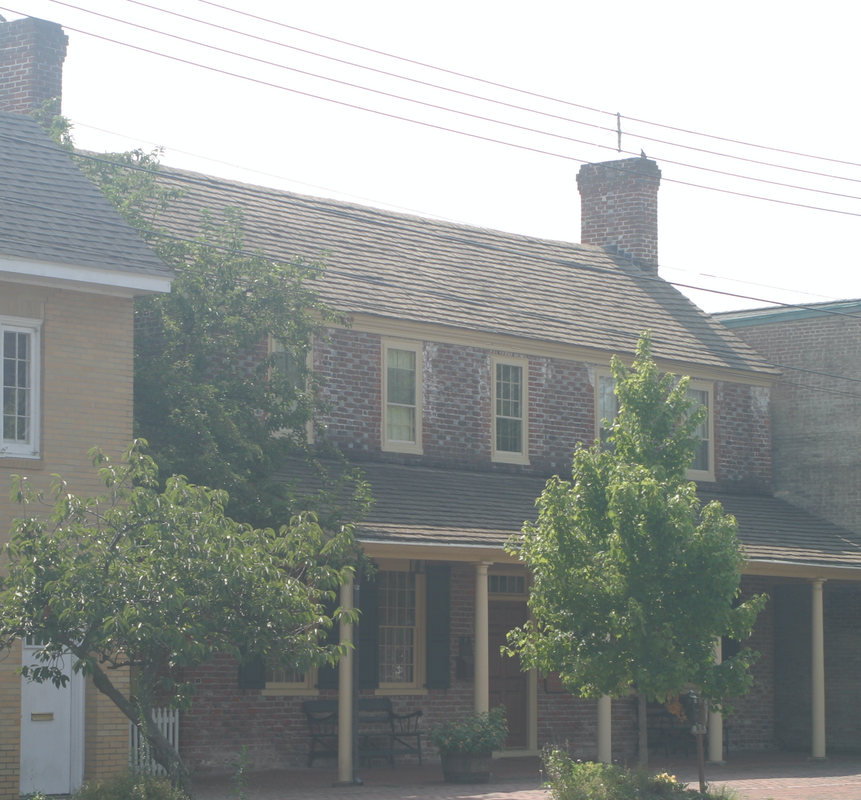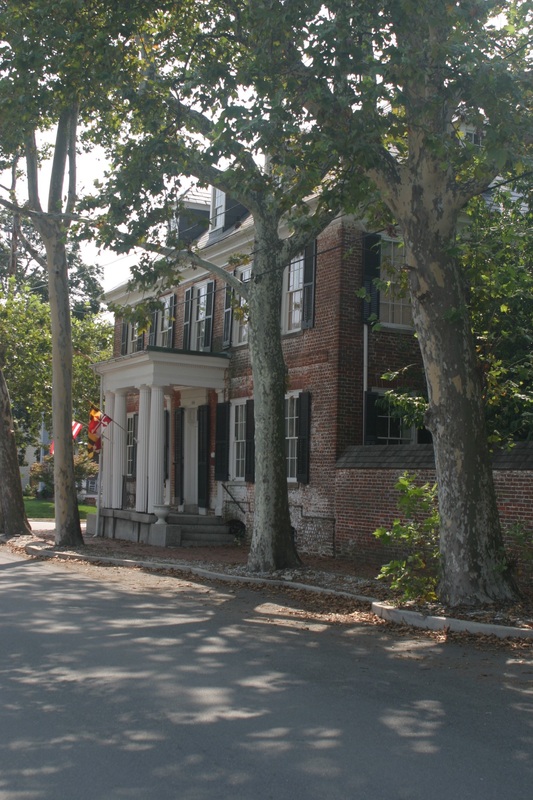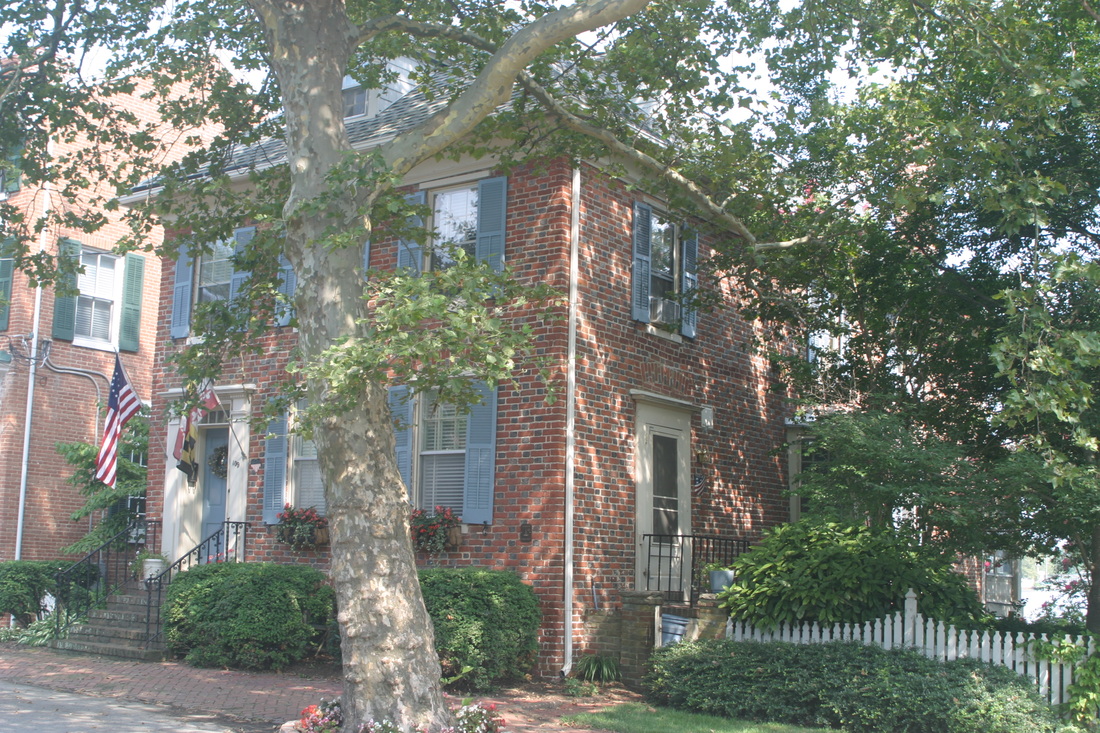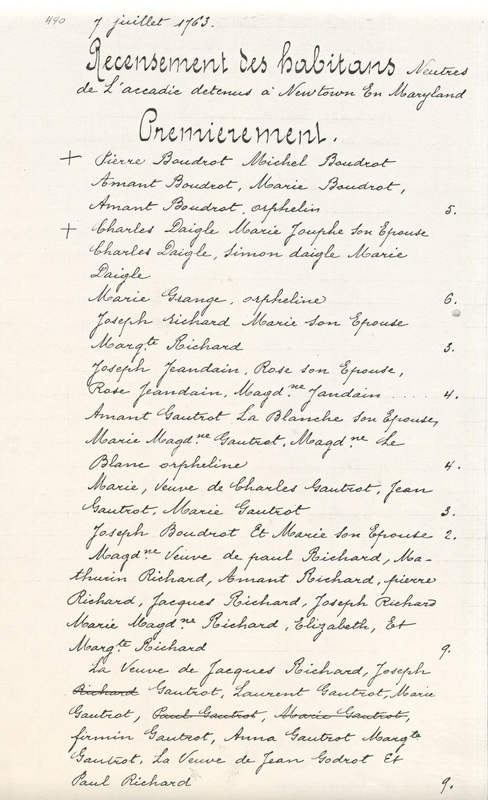Looking west on Chester River from High Street - Chestertown (Newtown), Kent County, Maryland
Acadians in Chestertown - Newtown
From its beginning in 1706, the small village on the banks of the Chester River was known as Newtown; however, in 1780 the name was changed to Chestertown when the town charter was revised. Unofficially the name Chestertown had been used for many years prior to 1780 -- reflecting the town's location on the Chester River. In the mid-1700s, Newtown was a major port in Maryland along with Annapolis and Oxford.
Although exiled Acadians did not arrive in Newtown (Chestertown) in 1755 when the dispersal of Acadians from Annapolis occurred, they likely migrated to Newtown from one of the Eastern Shore towns shortly after the initial dispersal. They probably entered the Customs House shortly after arriving in Newtown. They may have crossed the Chester River near the Custom House if they traveled there from the south. Some other buildings in Chestertown (Newtown) likely seen by the Acadians are shown below.
The story of Acadians in Maryland has deep significance for Acadian descendants whose families are from Louisiana as well as Nova Scotia. Family genealogist Joseph Pimentel was particularly surprised to discover in his research that his ancestor Michel Boudreau, b. 1746, of Wedgeport, Nova Scotia had been exiled with his parents, Pierre and Anne, to Newtown, Maryland following his family's expulsion from Grand Pré. Against all odds, Michel Boudreau returned to Nova Scotia and married Marguerite-Angé Pothier in 1773!
How Michel made that trip to "en Bas de Tousquet" from Newtown, Maryland is unknown. Historian Greg Wood notes that early St. Gabriel, Louisiana settlers who arrived on the Schooner La Vierge (The Virgin) comprised approximately two-thirds of the 1763 Acadian lists for Baltimore. The other St. Gabriel settlers comprised nearly half of the Georgetown and Upper Marlboro Acadians on 1763 as well as several families from Newtown, Oxford and Port Tobacco.
Although exiled Acadians did not arrive in Newtown (Chestertown) in 1755 when the dispersal of Acadians from Annapolis occurred, they likely migrated to Newtown from one of the Eastern Shore towns shortly after the initial dispersal. They probably entered the Customs House shortly after arriving in Newtown. They may have crossed the Chester River near the Custom House if they traveled there from the south. Some other buildings in Chestertown (Newtown) likely seen by the Acadians are shown below.
The story of Acadians in Maryland has deep significance for Acadian descendants whose families are from Louisiana as well as Nova Scotia. Family genealogist Joseph Pimentel was particularly surprised to discover in his research that his ancestor Michel Boudreau, b. 1746, of Wedgeport, Nova Scotia had been exiled with his parents, Pierre and Anne, to Newtown, Maryland following his family's expulsion from Grand Pré. Against all odds, Michel Boudreau returned to Nova Scotia and married Marguerite-Angé Pothier in 1773!
How Michel made that trip to "en Bas de Tousquet" from Newtown, Maryland is unknown. Historian Greg Wood notes that early St. Gabriel, Louisiana settlers who arrived on the Schooner La Vierge (The Virgin) comprised approximately two-thirds of the 1763 Acadian lists for Baltimore. The other St. Gabriel settlers comprised nearly half of the Georgetown and Upper Marlboro Acadians on 1763 as well as several families from Newtown, Oxford and Port Tobacco.
The following landmarks and buildings are located near the Chester River and within a couple of blocks of the Custom House:
Acadian Surnames of Chestertown - Newtown (1763)
- Boudrot (Boudreau)
- Daigle
- Gautrot
- Grangé (Granger)
- Hébert
- Jeaudain
- LeBlanc
- Richard
Acadians in Chestertown - Newtown (1763)
Published Courtesy of Library and Archives Canada
Note: To magnify the above document(s), using Chrome, right mouse click on the document and select "Open image in new tab." Or in Firefox, right mouse click on the document and select "View Image." Then use your magnifying glass to enlarge the print. In IE, use the standard "zoom" feature to enlarge your page. In Safari, right mouse click on the document and select "Open Image in New Window." Also, by clicking CTRL and then the + / - keys you may enlarge or reduce the size of any page on the site.
Note: To magnify the above document(s), using Chrome, right mouse click on the document and select "Open image in new tab." Or in Firefox, right mouse click on the document and select "View Image." Then use your magnifying glass to enlarge the print. In IE, use the standard "zoom" feature to enlarge your page. In Safari, right mouse click on the document and select "Open Image in New Window." Also, by clicking CTRL and then the + / - keys you may enlarge or reduce the size of any page on the site.








